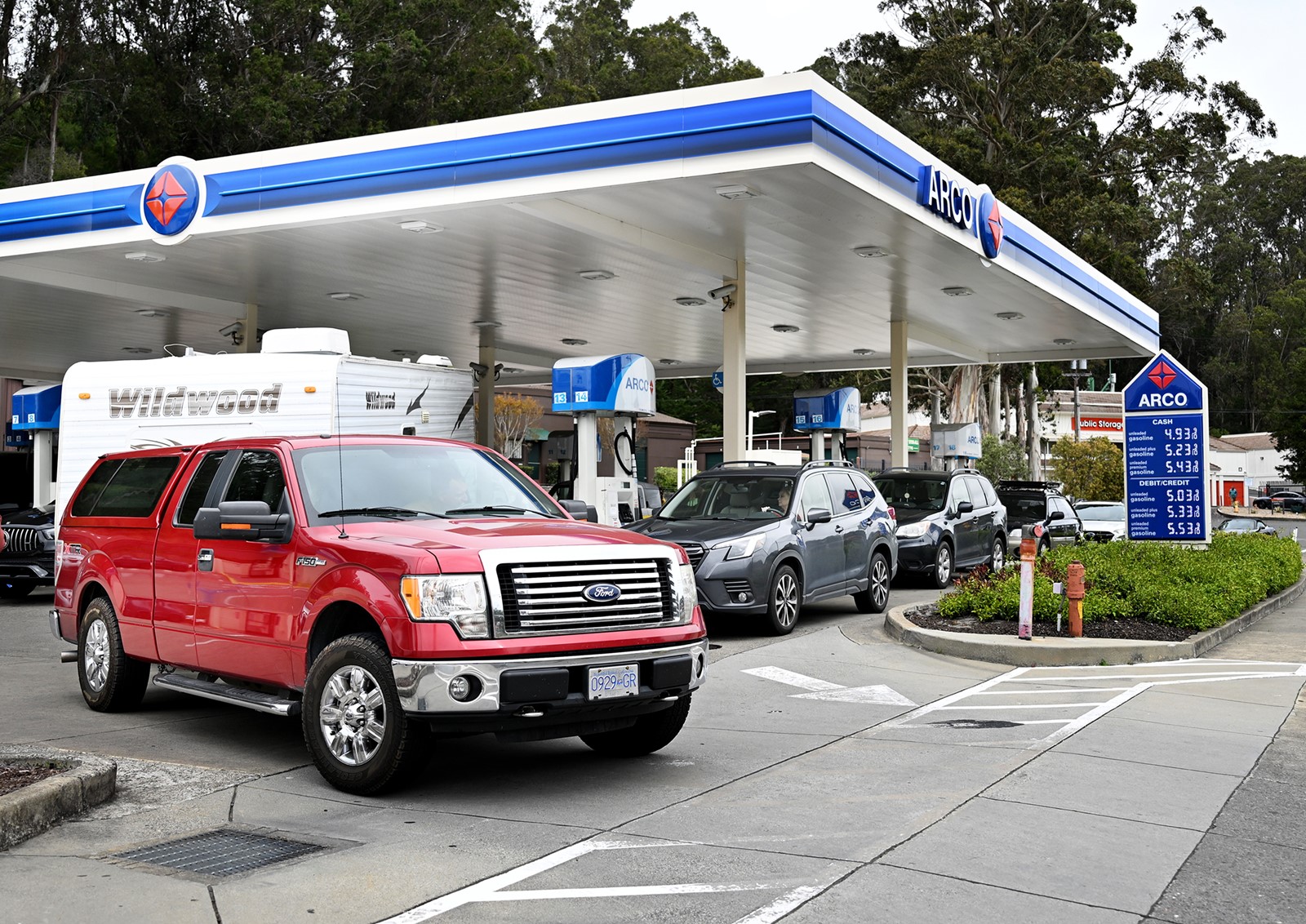
Gasoline prices should remain stable in California throughout the holiday season.
There’s even a slight chance they could drop down to even $4 a gallon, said Patrick De Haan, head of petroleum analysis at GasBuddy, which tracks prices.
The average price Tuesday for a gallon of regular gasoline in California was $4.44, according to AAA. That’s down from $4.90 a year ago and $4.60 a month ago. Prices are expected to remain around that level through the Thanksgiving weekend.
December, though, could see further declines, though to get as low as $4 would require several developments. Oil prices would have to remain stable or drop. Refineries would have to avoid any serious problems. Demand would have to remain steady.
None of that is assured, De Haan said, particularly with President-elect Donald Trump’s statement Monday that after he takes office Jan. 20, he wants to impose new tariffs on Mexico, Canada and China unless they meet certain conditions.
Canada is an important oil importer, and De Haan estimated that restricting its imports could have “huge impacts” on gasoline prices in the Great Lakes, Rockies and Midwest.
Other variables: Oil has been trading at a slightly higher price recently, as the markets got nervous when Russia escalated its war against Ukraine. The war helped all prices spike after it began in February 2022. And the atmospheric river that hit the northern parts of the West Coast caused power outages that could impact refineries.
For gasoline prices to drop noticeably, “Oil needs to hold where it is and then we need to see power outrages fade away,” De Haan said.
No matter how far the drop, prices are virtually assured of remaining far above the national average. Thirty-two states now have average gasoline prices under $3.
California’s prices are higher for several reasons. Its state and local taxes and fees on gasoline are 69.8 cents a gallon, the highest in the country.
Another factor: Its refineries produce a cleaner product to meet state environmental regulations.
“Refineries in the state often operate at or near maximum capacity because of the high demand for those petroleum products and the lack of interstate pipelines that can deliver those cleaner fuels into the state,” explained the federal Energy Information Administration in a May analysis.
“When unplanned refinery outages occur, the lack of CaRFG (California reformulated gasoline) deliveries available from interstate pipelines means replacement supplies of CaRFG come in by marine tanker from out-of-state U.S. refineries or from other countries,” it said.
“It can take several weeks to find and bring replacement motor gasoline from overseas that meets California’s unique specifications.”
Demand is also expected to be up this holiday season. AAA Northern California estimated 71.7 million people, including 9.32 million Californians, were expected to travel by car over the Thanksgiving holiday. The national figure is up 1.3 million over last year.


 PREVIOUS ARTICLE
PREVIOUS ARTICLE
